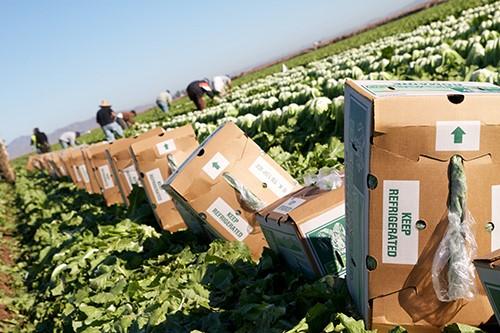A multistate Escherichia coli outbreak linked to romaine lettuce grew by 4 deaths and 25 cases, according to an update today from the Centers for Disease Control and Prevention (CDC).
The CDC has now confirmed 197 cases in 35 states and 5 deaths in this outbreak. Three more states—Arkansas, North Carolina, and Oklahoma—reported sick people since the CDC's previous update on May 16.
The four new fatal cases occurred in Arkansas (1), Minnesota (2), and New York (1). Eighty-nine people have been hospitalized since the outbreak began in March, including 26 people who developed hemolytic uremic syndrome, a serious kidney complication. According to the US Food and Drug Administration (FDA), this is the largest E coli outbreak in a decade.
The CDC said health officials continue to question patients. Of 158 patients interviewed, 140 (89%) said they ate romaine lettuce in the week before their symptoms started. Patients range in age from 1 to 88 years, with a median age of 29. Most patients (68%) are female.
"Most of the people who recently became ill ate romaine lettuce when lettuce from the Yuma growing region was likely still available in stores, restaurants, or in peoples’ homes. Some people who became sick did not report eating romaine lettuce, but had close contact with someone else who got sick from eating romaine lettuce," the CDC said.
The CDC warned that any illnesses occurring after May 6 might not be reported, as the lag time after symptom onset can be 2 to 3 weeks.
FDA confirms no Yuma lettuce on shelves
No single grower or supplier of romaine lettuce has been implicated in this outbreak, but produce from the Yuma, Ariz., growing region has been identified as the likely source of the harmful bacteria. Today the FDA said romaine lettuce is no longer being produced and distributed from the Yuma growing region, and that the last date of harvest was Apr 16.
"At that time, due to the 21-day shelf life, we could not be certain that romaine lettuce from that region was no longer in the supply chain," the FDA said.
FDA Commissioner Scott Gottlieb, MD, and Deputy Commissioner Stephen Ostroff, MD, issued a statement on the FDA's blog yesterday, saying any immediate risk from the Yuma growing region is over, but trace-back efforts are still under way to determine how and where romaine lettuce got contaminated.
"The FDA's investigators are actively searching for answers as to the source of this outbreak, and what steps can be taken to prevent it from recurring in future growing seasons," they said. "Based on the information we have to date, there are still no obvious points of convergence along the supply chain."
Though one farm has been identified as being the grower of lettuce that sickened inmates at an Alaskan correctional facility, the commissioners said there isn't a "simple or obvious" explanation for the outbreak.
"If the explanation was as simple as a single farm, or a single processor or distributor, we would have already figured that out," Gottlieb and Ostroff said.
In a counterpoint published by Food Safety News today, its publisher Bill Marler said the FDA should name any and all point-of-sale restaurants implicated in this outbreak.
While the FDA defends its decision to redact the names because of the uncertainty of supply chain contamination, Marler said legal teams have already determined clusters of illnesses tied to Panera, Texas Roadhouse, Red Lobster, Papa Murphy's, and the processor Freshway Foods.
See also:
Jun 1 CDC update
Jun 1 FDA update
May 31 FDA blog post
Jun 1 Food Safety News counterpoint



















